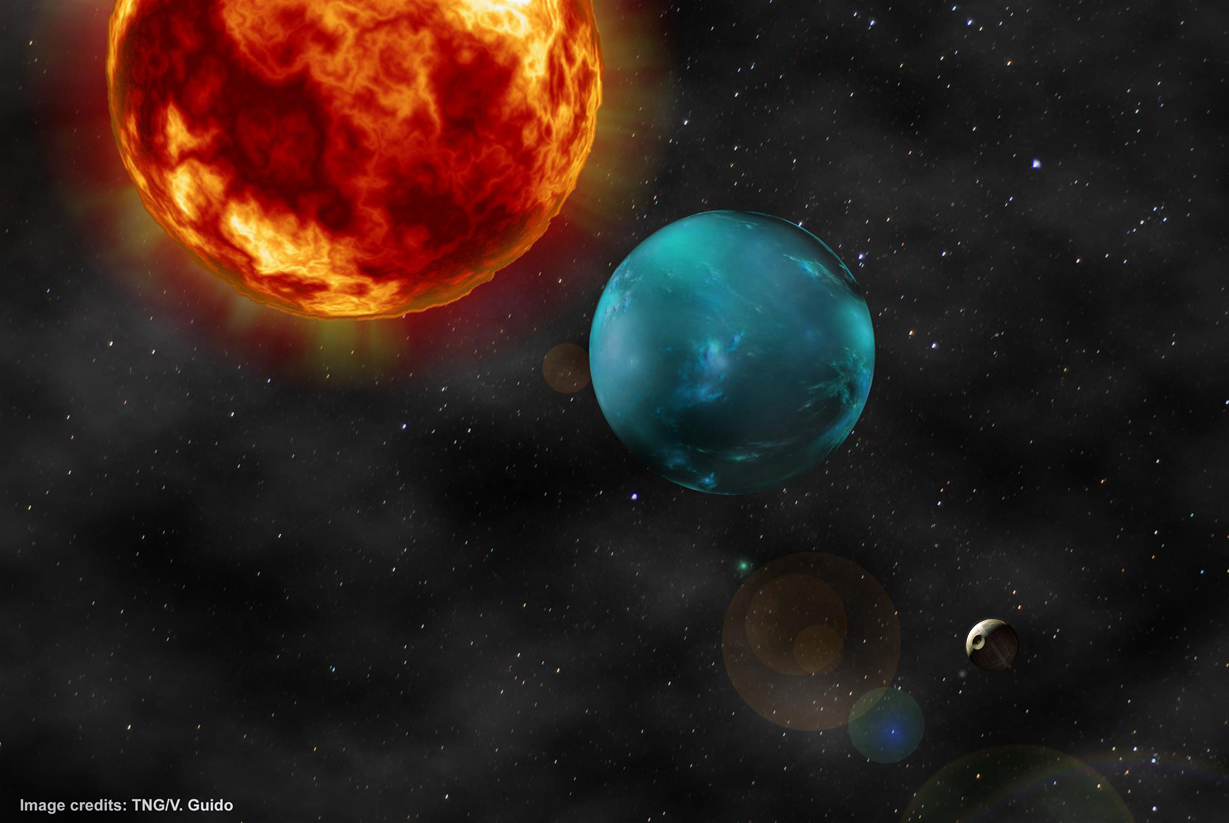K2-106B: a Heavy Metal Planet

Artits's impression of system K2-106. Credits: Vincenzo Guido and Emilio Molinari.
An international consortium of astronomers found an unusually dense extrasolar planet with 1.5 Earth-radii. This alien world, dubbed K2-106b, shows that planets around other stars have more extreme features than the rocky planets in the solar system.
A relatively small radius, but a mass 8 times higher than that of Earth. The newly discovered planet K2-106 b surprises astronomers because it has a much higher density than Earth. Eike Guenther, staff astronomer at the Thuringian State Observatory in Germany, and his colleagues from research institutions in the US, Germany, Italy, Spain and Japan used various telescopes to look at the star EPIC 220674823, or in short "K2-106". K2 stands for the K2 survey of the Kepler satellite, 106 is an identifying number for a planet within this survey. The group found two planets circling K2-106. One of them, K2-106 b, orbits its host star within 14 hours.
Planets with orbital periods of less than 24 hours (one day on Earth) are classified as "ultra-short period planets". Not many of them have been found so far. Such a short orbital period is unusual, even more extraordinary is the density of the planet K2-106 b.
Most ultra-short period planets have densities that are consistent with an Earth-like composition, but K2-106 b is different. The researchers used the transit and the radial velocity method to detect the planet. Using two different methods allowed them to measure the radius and the mass, which then enabled them to derive the density of the planet. "With 1.5 Earth-radii, K2-106b is relatively small, but its mass is 8 times higher than that of the Earth. Its density is 13 g/cm3, one of the highest densities found in extrasolar planets so far. In comparison to Earth, its density is twice as high" says Eike Guenther.
Lead has a density of 11.34 g/cm3, iron has a density of 7.87 g/cm3. Planetary models show that such high density in K2-106b can only be explained if the planet consists of 80% iron and other metals. That certainly makes it a heavy metal planet. "K2-106b shows that extrasolar planets can be quite different from hard rock planets in our solar system. More research is needed to understand them better" add Davide Gandolfi from the Department of Physics of the University of Torino (Italy).
In total 23 institutions are part of the consortium that has discovred K2-106 b. Amongst them the Thüringer Landessternwarte Tautenburg, Germany, the Dipartimento di Fisica, Università di Torino, Italy, the Department of Physics and the Kavli Institute for Astrophysics and Space Research, Cambridge, MA USA, the Department of Earth and Planetary Sciences, Tokyo Institute of Technology in Tokyo, Japan, the Leiden Observatory in the Netherlands, and the Instituto de Astrofísica de Canarias, La Laguna (Tenerife) Spain.
The discovery of the peculiarly high density of K2-106 b has been recently published in the international journal Astronomy & Astrophysics. It is based on observations performed with the Nordic Optical Telescope and the Telescopio Nazionale Galileo at Roque de los Muchachos Observatory in the island of La Palma (Spain), the 3.6-m Telescope of the European Southern Observatory at La Silla Observatory in Chile, the 6.5-m Magellan/Clay Telescope at Las Campanas Observatory in Chile, and the 8.2 m Subaru Telescope at Mauna Kea Observatory on Hawaii.
Paper available at: " K2-106, a system containing a metal-rich planet and a planet of lower density" Guenther, Barragán, Dai, Gandolfi, Hirano et al. 2017, A&A 608, A93.
TNG contact: dydat@tng.iac.es

